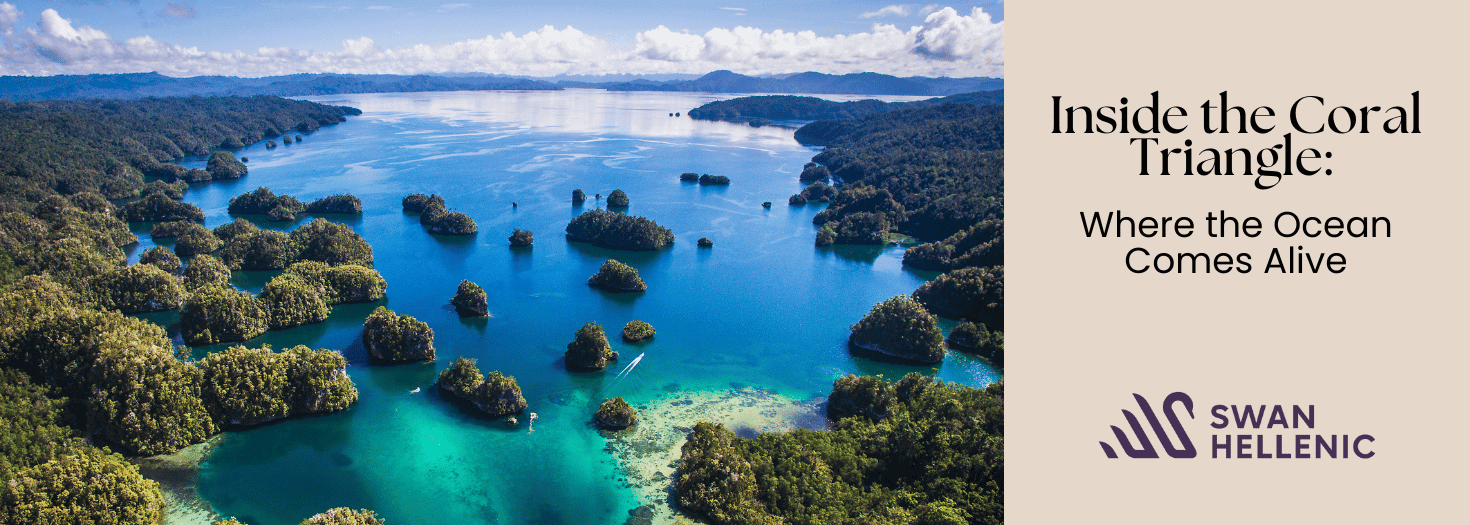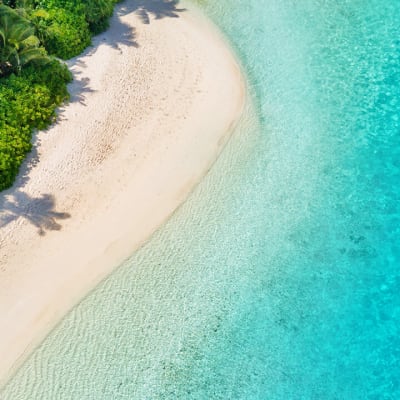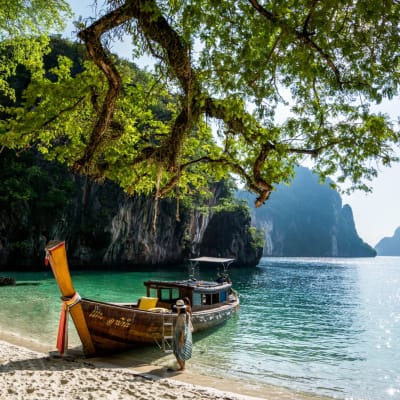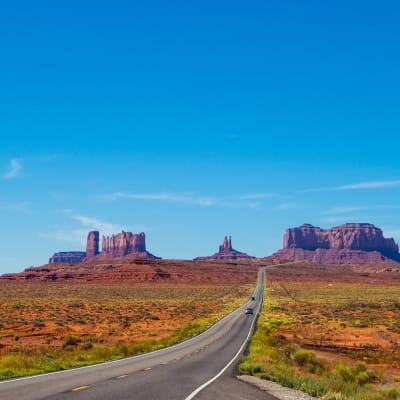Inside the Coral Triangle: Where the Ocean Comes Alive
Table of Contents
Every so often, some destinations remind you that the world still has frontiers. Raja Ampat and the Coral Triangle - sat in the remote waters of West Papua, Indonesia - are two examples. And in our opinion, they're best explored with Swan Hellenic.
If you caught the re-runs of The Wilderness with Simon Reeve recently, you’ll have seen what makes this region so magnetic. Reeve glides through glassy lagoons, past jungle-draped cliffs and coral gardens that seem to breathe with colour. It’s cinematic, of course – but the reality somehow manages to be even more extraordinary. This is the Coral Triangle: the most biodiverse marine region on Earth, home to 75% of the planet’s coral species and over 2,000 kinds of reef fish. Here, every ripple seems alive.
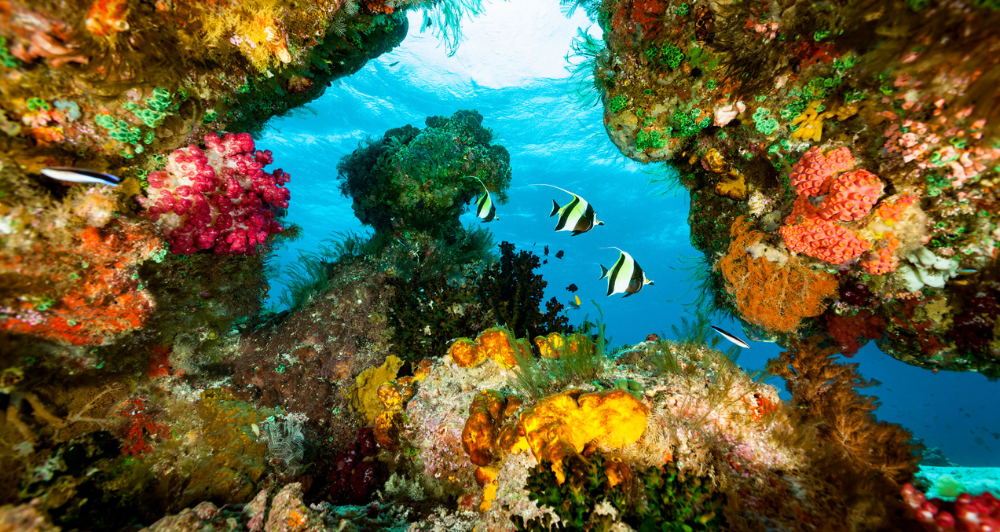
A Living Tapestry Beneath the Surface
Slip below the surface, and the world explodes into colour. Divers talk about that first descent – the shock of clarity, the constant movement, the hum of life. Soft corals bloom in pinks and golds, clownfish dart through sea anemones, and reef sharks glide with an unhurried grace. Manta rays appear like underwater ghosts, tracing elegant circles through the sunlight. Every reef tells its own story, shaped by currents and rhythm and time.
Marine scientists call Raja Ampat the “Amazon of the Seas,” but that almost feels too tidy a label. It’s wilder, more elemental than that. And the Coral Triangle is diverse and resilient in equal measure – despite rising sea temperatures, many of these reefs remain healthy, their coral systems adapting in ways scientists are still learning to understand. They’ve survived warming oceans better than almost anywhere else on Earth. It offers beauty and all-important hope: proof that nature, when protected and respected, can still thrive.
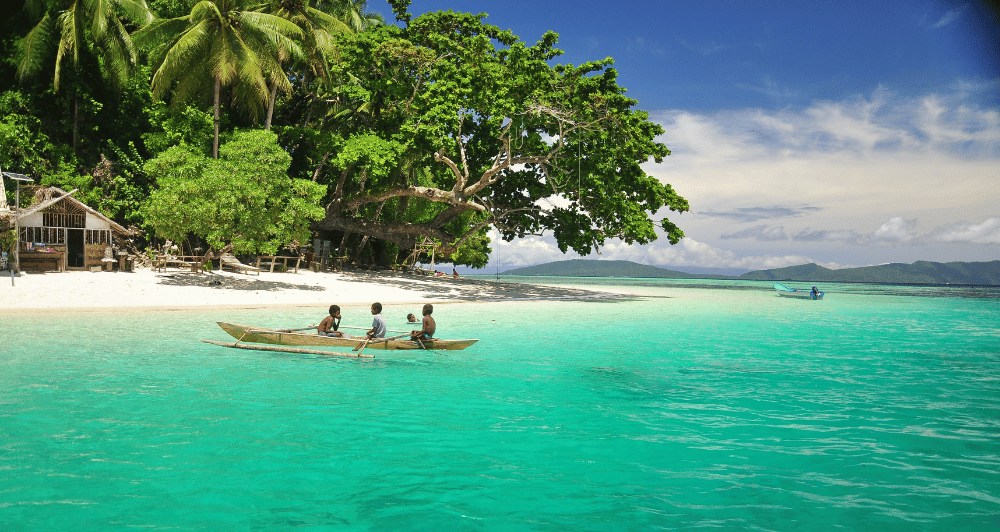
Life Between Islands
Above the waterline, the magic continues. Raja Ampat feels like a secret archipelago scattered by some generous hand – 1,500 islands of limestone and jungle, each one fringed by sand so pale it looks powdered and each with its own character. The landscape feels untouched, timeless, as if it exists just outside of the modern world.
In the small coastal villages, life follows the rhythm of the tides. There’s a deep respect for the sea here. Children dive from wooden jetties into turquoise shallows, fishermen fix nets in the shade of coconut palms, and there’s an overarching simplicity that feels grounding – a quiet, unspoken understanding between land and sea. These are communities whose knowledge of the ocean runs deeper than any map, and the people lead conservation efforts that are among the most successful in the world – examples of good done right.
Travelling with Swan Hellenic, you meet these people on their own terms. It’s a style of exploration that favours conversation over consumption, authenticity over spectacle. Guests are encouraged to listen, to learn, and to leave lighter footprints. Something the brand has long championed across its Asia Pacific expeditions.
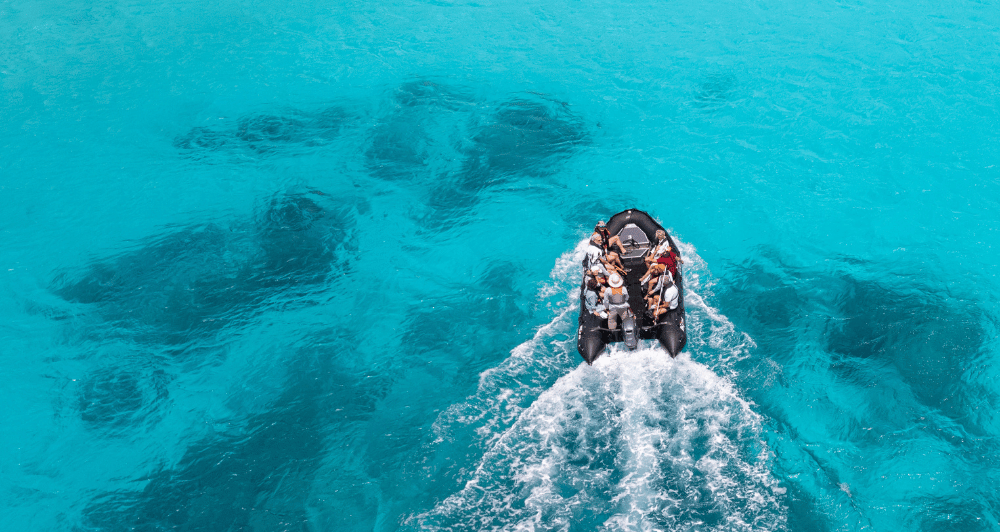
The Joy of Slow Travel
Part of Raja Ampat’s appeal lies in its inaccessibility – it’s not an easy place to reach, and that’s precisely why it remains so pristine. Getting there takes time, intention, and a willingness to slow down – and that quality often defines the entire experience. Days are shaped by the simple rise and fall of the tide rather than the ticking of a clock.
Mornings might begin with a Zodiac ride through mangrove-framed lagoons, their mirror-like waters disturbed only by the precise flick of a ray’s tail. Afternoons take place underwater, snorkelling through reefs that shimmer and catch the light like stained glass. There’s kayaking through hidden bays, birdwatching for the elusive Wilson’s bird-of-paradise, or simply standing on deck, sea breeze flowing through your hair, watching the horizon blur into nothing but a molten gold haze.
Evenings on board are just as rich. Over dinner, marine biologists and naturalists share insights from the day’s discoveries: why corals fluoresce, how whale sharks migrate, the delicate balance that sustains this ecosystem. These aren’t lectures, they’re conversations, and there’s a quiet sense of privilege in being here, too. It’s not just the luxury of comfort, but of perspective. You’re reminded that true travel isn’t about ticking boxes, it’s more about noticing. About being small in a vast, living world. And these sailings are made for travellers who crave understanding as much as wonder.
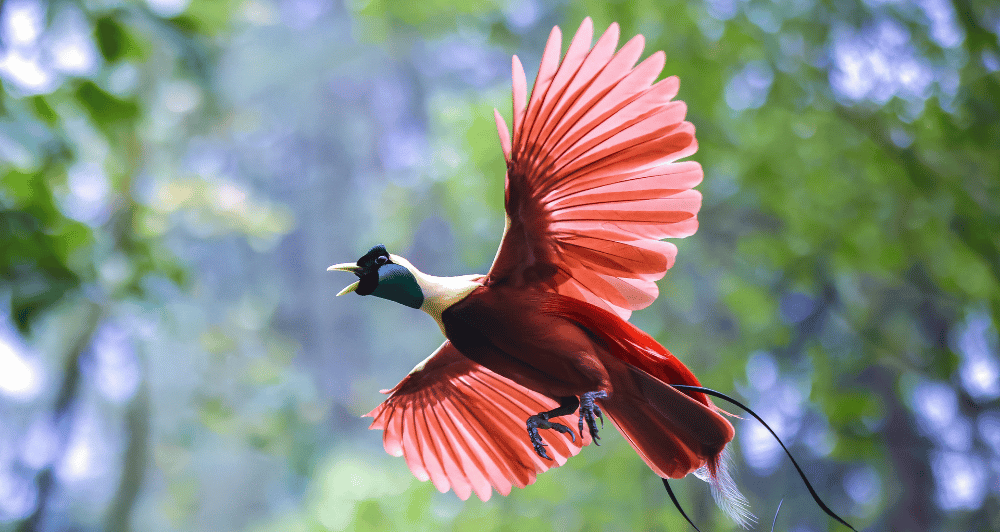
A Wider Perspective
Raja Ampat is just one part of a vast, intricate story. The Coral Triangle stretches across six countries: Indonesia, the Philippines, Malaysia, Papua New Guinea, Timor-Leste, and the Solomon Islands. It forms the beating heart of the Asia Pacific’s marine world – a region of contrasts: volcanoes and rainforests, island cultures and ancient trade routes, history and myth woven through every shoreline.
Travelling here with Swan Hellenic connects these threads. Their expert-led voyages help you to interpret the seascapes you explore. You’ll sail through places where cultures overlap, where modern conservation meets centuries-old tradition, where the edge of one island’s story becomes the beginning of another’s.
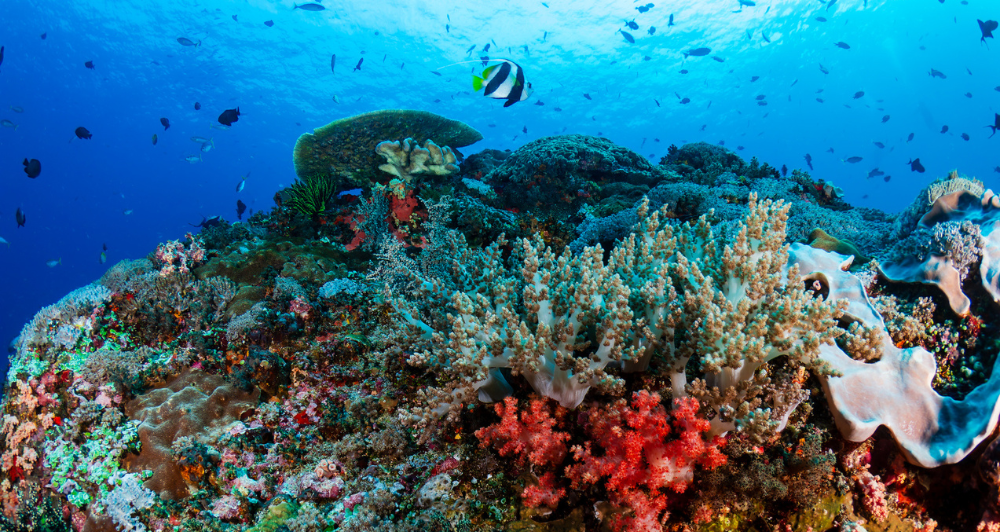
Why It Matters
For many travellers, visiting the Coral Triangle goes beyond being a bucket-list expedition, and becomes a return to perspective. Not only does it feel like peering into the planet’s blueprint - a reminder of what the oceans were, and what they could still be - it’s also a stark reminder that in an age when even remote corners of the world feel mapped and managed and broadcast over every online platform imaginable, the wildness that still exists. It reminds us of the experiences that modern technology can’t capture, no matter how high the quality.
Swan Hellenic’s approach to exploration echoes that same sentiment, and it’s why so many of our own team opt to sail the world with them. Small ships mean smaller footprints. Expert guides and guest lecturers bring the context that turns surface beauty into deeper meaning. And there’s plenty of space and time to feel and enjoy the magnitude of what you’re experiencing – a rare gift in travel today.
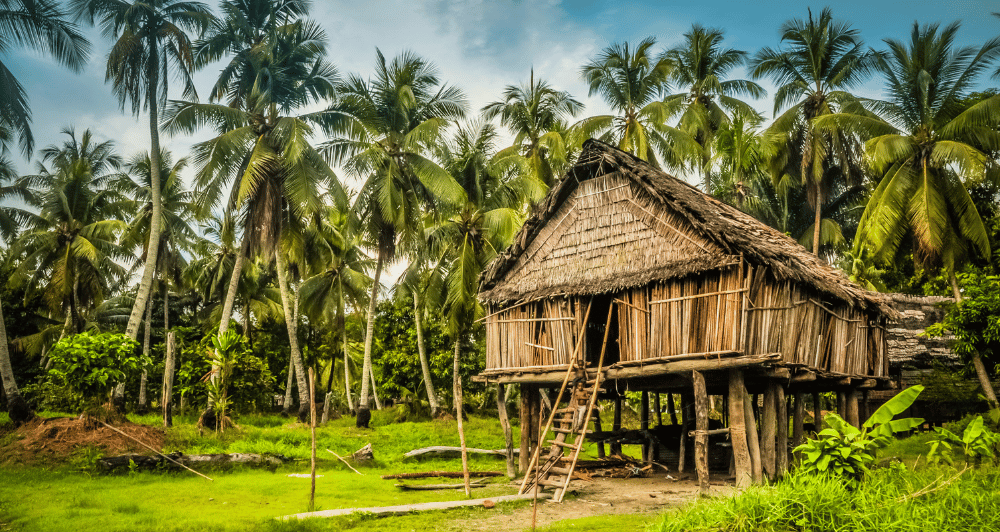
How to Experience It
Several of Swan Hellenic’s upcoming Asia Pacific voyages venture deep into this marine frontier. “Secrets of the Coral Triangle: West Papua & Raja Ampat” and “Raja Ampat & The Philippines: The Last Paradise” both offer intimate and immersive access to this extraordinary region. Expect Zodiac landings on hidden beaches, time spent snorkelling among coral gardens, and opportunities to meet local communities who are guardians of the sea.
If you’ve watched Simon Reeve’s quiet wonder as he drifts through these waters and thought, I want to feel that, there’s no better way to begin. The Coral Triangle is a glorious example of how alive our planet still is, and how extraordinary it feels to step way beyond the map.
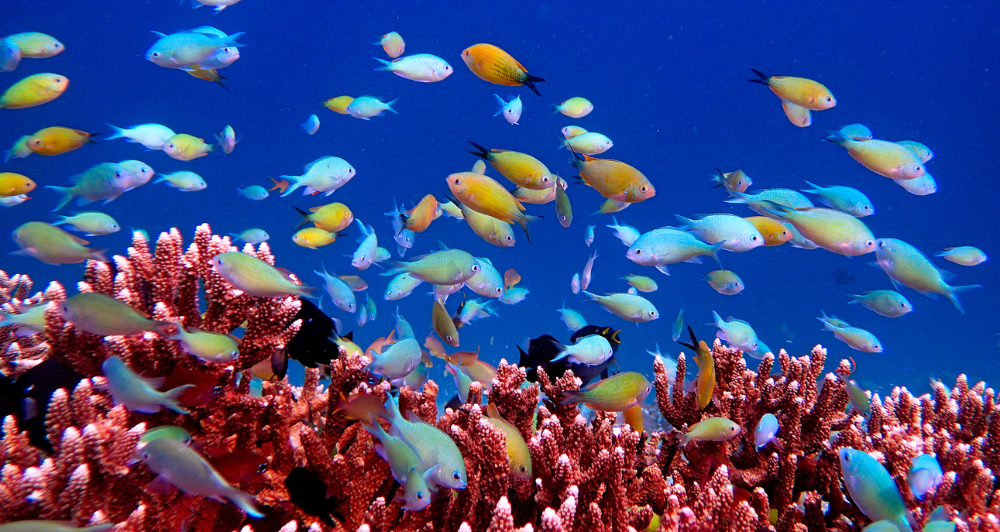
Must-Sees in the Coral Triangle
- Fish - Over 3,000 species of fish live here, and lots are endemic to the area. Keep an eye out for triggerfish, blennies, and schools of barracuda.
- Invertebrates - Nudibranchs, Christmas tree worms (yes, really), sea stars, and peacock mantis shrimp.
- Mammals - Blue whales, fin whales, dolphins, and lots of whale sharks.
- Turtles - Six of the seven species of marine turtles can be found within the Coral Triangle including hawksbill turtles, which nest in large numbers, and leatherback turtles, most famously found nesting on the shores of New Guinea.
